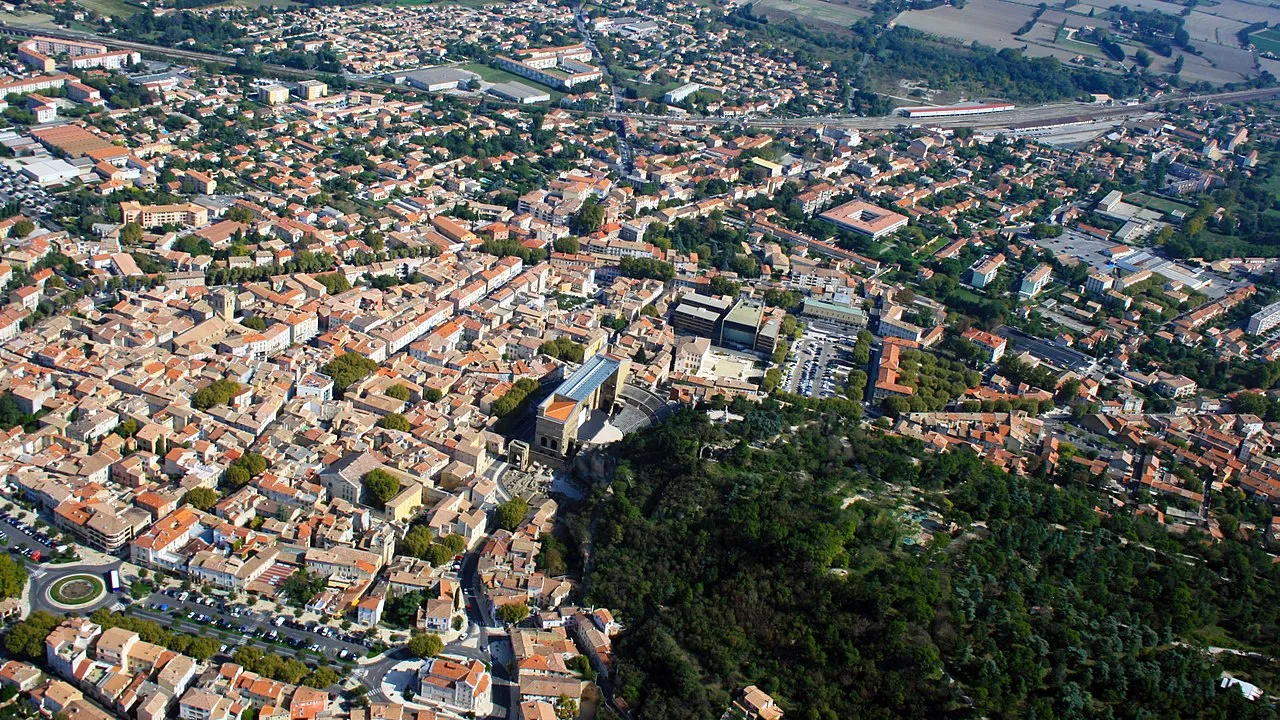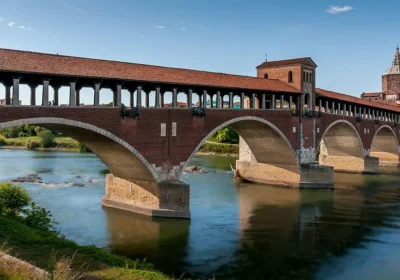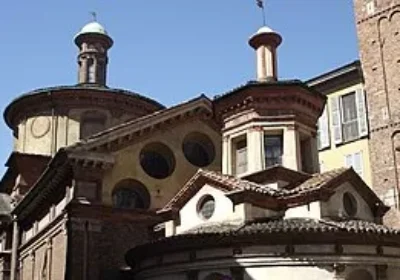Orange is a town in France, in the Vaucluse department, on the left bank of the Rhone, 21 kilometers north of Avignon. It was named Arausion (Latin: Arausio) by the Gauls in honor of one of the Celtic gods. Under Emperor Augustus it became one of the most flourishing centers of Roman Provence.
Ancient Arausio originated as a Celtic settlement – it was here in 105 B.C. that the first clash of the Roman army with the Cymbrians and Teutons (Germanic tribes) took place, which ended with the complete defeat of the Romans, one hundred thousand of whom fell on the battlefield. It was badly damaged in 21 AD, during the Gallic revolt led by Julius Sacrovir and Julius Florus, but the revenues from the trade, which followed the route from the Mediterranean to Lugdunum (Lyon), made it possible to rebuild the city and build a triumphal arch in honor of the suppression of the revolt.
Arauzion achieved extraordinary prosperity, especially in times of peace. With a population four times as large as it is now, the city acquired a theater and amphitheater, thermae and circus, a triumphal arch and numerous temples. Was it possible to call “provincial” a rich city with a theater and a gymnasium (in our way – sports complex), with baths and a circus, arches and columns, with numerous markets and palaces, standing on a busy cobbled road? In any case, this epithet was unanimously denied to the city by all ancient authors, who left many testimonies about it. Titus Livius (one of the most famous Roman historians) and Strabo (Greek historian and geographer), Pomponius Mela (the earliest Roman geographer) and Pliny the Elder (Roman polymath, author of “Natural History”) admired the local climate and architecture, the quality of performances and gladiatorial fights, and even the menagerie was considered only slightly inferior to the capital.
During the XIII century a small dukedom was located here, and due to the complex vicissitudes of marriages and inheritances, which abound in local history, this region went to one of the branches of the Bo family, whose members were at the same time heirs of the Germanic principality of Nassau. When the famous William the Silent, Prince of Orange and Nassau, became ruler of the United Provinces of the Netherlands, the name of the Provençal town would be inextricably linked with that of the Dutch Orange dynasty.
The Dutch royal family showed interest and care for the defense of their distant possession by building a castle and city walls. But the material for this construction was taken from what little was left after the barbarian invasion (destroyed by the Alemanni and Visigoths) – thus little of the famous monuments of the Roman Empire remains in Orange, except for the Arc de Triomphe and the Theater. When Louis XIV, King of France, went to war against Holland, it was the Principality of Orange that was the first to pay the bill, with its castle destroyed and the city wall razed to the ground. The Treaty of Utrecht of 1713 recognized French possession of the principality.
The most important of the city’s remaining Roman monuments is, of course, the Arch, which stands on the ancient road connecting Arles with Lyon. Erected in 49 BC in honor of the victory of Julius Caesar, it was then dedicated to Tiberius in 25 BC. The main plot of bas-reliefs – the story of the glorious deeds of the indestructible second legion, the veterans of which was founded Orange-Arauzion. The nineteen-meter arch crowns the picture of triumph – a procession of legions with trophies, tympani and cymbals on one side and a line of prisoners in chains on the other.
The famous ancient theater of Orange was built under Emperor Augustus. It is the only theater of Roman times in the world, where the facade of the stage – 36 meters high and 103 meters long – has been preserved. Once this theater housed eleven thousand spectators, now – to create a gentle regime to the monument – at the same time let in no more than seven thousand. It is also famous for its exceptional acoustics. A restored colossal statue of Augustus was returned to the central niche in 1950. Standing 3.55 meters high, it is one of the grandest statues sculpted during the Roman Empire.
The surroundings of the theater were thoroughly explored, and one by one the city quarters began to “recall” their ancient appearance. Today, the gymnasium, which occupies an area of 400 by 80 meters, has been almost completely uncovered. The running tracks, the platform for classical wrestling, the training grounds… have been uncovered.
In the ancient theater of Orange are now playing performances, and the cheerful hum of the crowd fills the amphitheater again. Who knows – maybe the cheers of the fans will be heard here again someday….

















